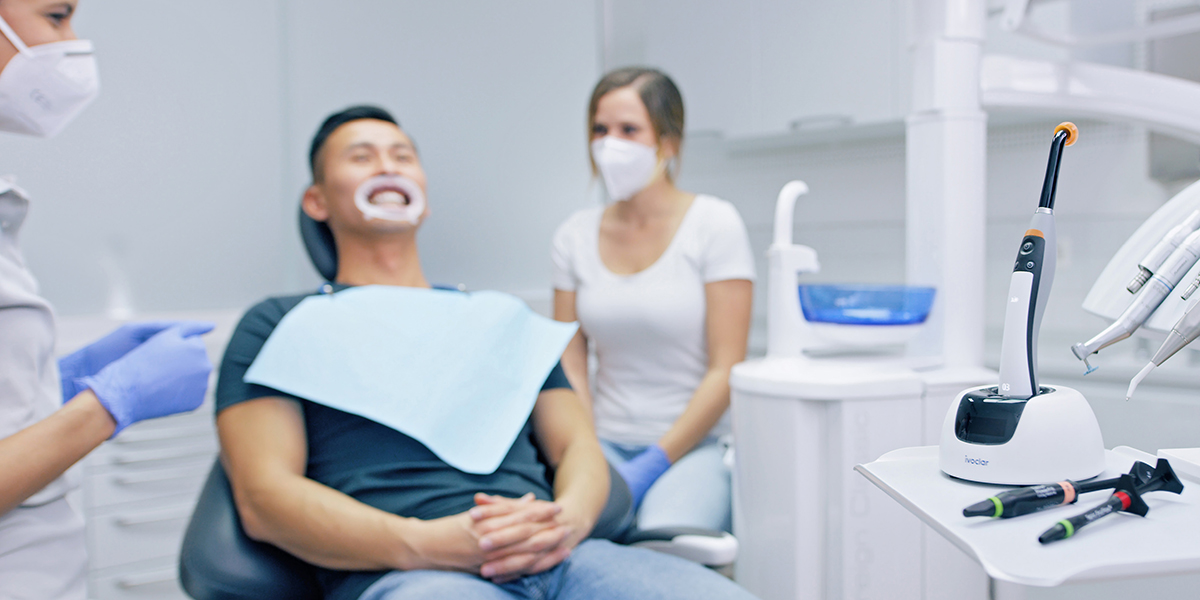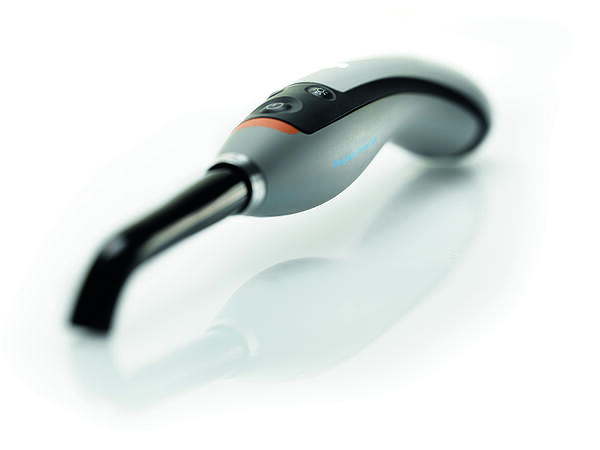

Is light polymerization a necessary evil or just a short, intermediate step? The Canadian dental clinician and researcher Richard Price at Dalhousie University in Halifax has spent the better part of the past few decades studying curing light technology. In an interview with Dental Tribune he shared his advice on how to light cure properly and explained why polymerization lights are so important for the success of your dental office.
Dr. Price, you have been instrumental in researching curing light technologies. Would you mind sharing your thoughts about compromised polymerization and its potential effects on clinical success?
Thank you for this opportunity to discuss the importance of using a good curing light to prevent undercuring dental resins. The problem as I see it is that most dentists were never taught much about the importance of proper light curing, or what to look for in a good curing light. Even the cheapest light and the sloppiest technique will produce a resin restoration that is hard to touch with an explorer. The problem is that the dentist cannot determine whether the bottom or the inside of the composite restoration has been adequately cured. An under-cured restoration is weaker and more prone to fracture, the bond strength to the tooth is reduced or even non-existent, post-operative sensitivity occurs, the color stability of the resin is compromised, and more chemicals are released into the body from the partially cured resin. These are all very undesirable outcomes of inadequate light curing, and none of them need to occur.
What should dental professionals consider key attributes of curing lights?
Curing lights are defined as medical devices and only approved medical devices should be used on patients. If we look at Ivoclar Vivadent’s curing lights, they are not only approved medical devices, but they are also functional, ergonomic, reliable, and thoroughly tested according to international standards. Furthermore, the broad emission spectrum of Bluephase lights means that they will cure all known dental resins and bonding systems.
Which key attributes of the Bluephase PowerCure will clinicians find helpful?
In addition to the new Polyvision technology, the light's high power and irradiance can cure both direct and indirect resin restorations. Depending on the thickness of the indirect restoration, the light can photocure the resin cement used to bond most indirect restorations to the tooth. I like to use several exposures using the Turbo or the 3s settings to photopolymerize the resin under my indirect restorations and the regular high output settings for my direct resin restorations.
The patented Polyvision technology has been described as an inbuilt personal polymerization assistant. How does it work?
The Polyvision feature should help clinicians achieve reliable curing results by automatically detecting if the light tip moves away from the tooth when the curing light is on. Polyvision alerts the operator using vibration or an acoustic signal if it detects movement. Then, depending on how far the light tip moves away from the tooth, it will automatically increase or even stop the light-curing cycle.

Your research shows the importance of uniform beam profile and irradiance. Why is this an important factor to consider?
Ivoclar Vivadent recognizes that the success of its resin-based products depends on them being adequately light cured. Suppose the curing light delivers hot spots of high irradiance and regions of low irradiance. In that case, the composite will not be uniformly and evenly cured. It is like baking a cake in an oven that does not provide even heating. The cake cooks, but not evenly. The current range of Bluephase lights delivers an exceptionally uniform light output and uniform irradiance across the light tip so that the composite is evenly cured.
Should dentists regularly measure the light output from their curing lights, and is a built-in radiometer helpful?
Manufacturers will often sell their light based on a claim that it delivers a high irradiance. The light may indeed deliver a high irradiance, but the power output from the light may be rather low. So how can a high irradiance light also be a low power light?
The reason is how the international standards report the irradiance from the light. In the standard, the total power from the light is first measured. This power is then divided by the area of the light tip to provide the irradiance. This means that to deliver the same irradiance, a light with a 7 mm diameter light tip need only produce half the power of a light with a 10 mm diameter light tip (because the area of a 7 mm diameter tip is half that of a 10 mm tip). In addition, this method provides a single irradiance value that is only an averaged value across the tip; however, because many lights have a poor beam profile, there are often hot spots of high irradiance and areas where the irradiance is rather low across the light tip. I see this all the time in budget lights, and this is completely missed in the international standard that only reports a single averaged irradiance value.
Certain models of Bluephase lights also include a radiometer in the charging base. This integrated tester makes it easy to test the light every day. I know that may seem unnecessary to some, but if you only test your light once a week or once a month, what will you do when the light fails the test, because it will fail at some point? Are you going to recall and redo, at no cost, all the restorations you placed since the last successful test? The solution is to test the light every day, and Ivoclar Vivadent makes this an easy thing to do.
Can you please advise on the correct polymerization technique for dental professionals?
When light-curing, I recommend the following steps:
Do you have any other tips to consider during polymerization that will help clinicians in their light-curing?
For Class II situations, I also cure from the buccal and lingual aspects after removing the matrix band.
I use the same technique for indirect restorations, but I usually use a tacking tip first, clean up the excess cement and then light cure with the tip in contact with the indirect restoration.
Only disinfect the light using the manufacturer’s recommended disinfectant. Some disinfectants can damage the light. Read the instructions to find out what you can safely use on the light.
Check that the end of the curing light tip is clean and has no chips, cracks, or cured resin on it. Using a barrier over the light helps with infection control and prevents resins from bonding to the light. However, when there is an infection control barrier over the light tip of the Bluephase PowerCure, and G4 light, the best option is to use two hands and make sure that the light tip covers the restoration. Watch what you are doing with that light tip.